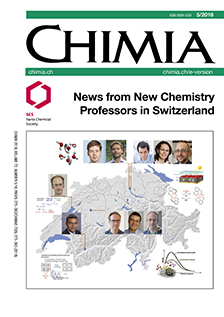Surface and Defect Chemistry of Oxide Materials
DOI:
https://doi.org/10.2533/chimia.2018.286Keywords:
Catalysis, Defects, Density functional theory, Oxide electronics, OxidesAbstract
Oxides and oxide-derived materials find ubiquitous applications in many industrial applications. These materials usually contain point defects, the concentration and type depending on the synthesis and operating conditions. Many of the functional properties are determined or strongly affected by the presence of these point defects. Despite steady advances in experimental techniques it is still difficult to unambiguously identify point defects and resulting atomic-scale mechanisms from experiment alone. Atomic-scale computational approaches such as density functional theory (DFT) provide an alternative approach that ideally complements experimental investigations. The resulting fundamental understanding of defect-induced mechanisms combined with the knowledge of how to tailor a point-defect profile to induce new functionality opens exciting new avenues to engineer novel material properties. This account discusses some case studies of defect-induced functionality in the area of oxide electronics and photocatalysis, giving a general flavour of our current understanding of the role of defects in these applications.Downloads
Published
2018-05-30
Issue
Section
Scientific Articles
License
Copyright (c) 2018 Swiss Chemical Society

This work is licensed under a Creative Commons Attribution-NonCommercial 4.0 International License.
How to Cite
[1]
U. Aschauer, Chimia 2018, 72, 286, DOI: 10.2533/chimia.2018.286.







